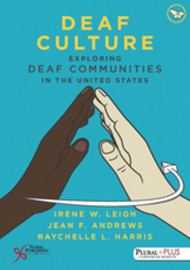This book is intended as an introductory text for those studying deaf studies or American Sign Language in the USA. It is written by a mix of deaf and hearing authors and perhaps some of its shortcoming in feeling like a cohesive piece of work comes from the mix of authors’ voices. The book jumps between history, small real life examples, personal opinion and research evidence - this does not engage me as a reader as it makes the theme confused and, at times, less impactful.
At times, I felt the text was offering out-dated information on educational systems and hearing technologies which had most certainly affected the authors but is not current practice. I found that it was difficult to pick out the current thinking in the text on technology and educational systems.
Chapter six on ‘Deaf Identities’ has some interesting theories on development of identity, but again this seems to get lost in some history that has proved to be inaccurate in its way of thinking.
Perhaps some of the impact of this book would be more evident to an American readership and, certainly, it is a text aimed at that readership. I think if you were given the text as a reference book for a deaf studies course, you would certainly find it well-referenced and may find areas it expands upon relevant to your studies.
As a whole, I would not recommend this book to a European audience who wanted an understanding of current deaf culture.




